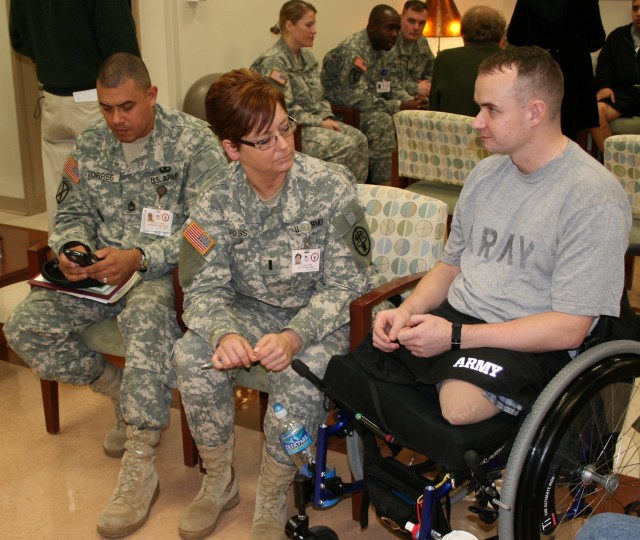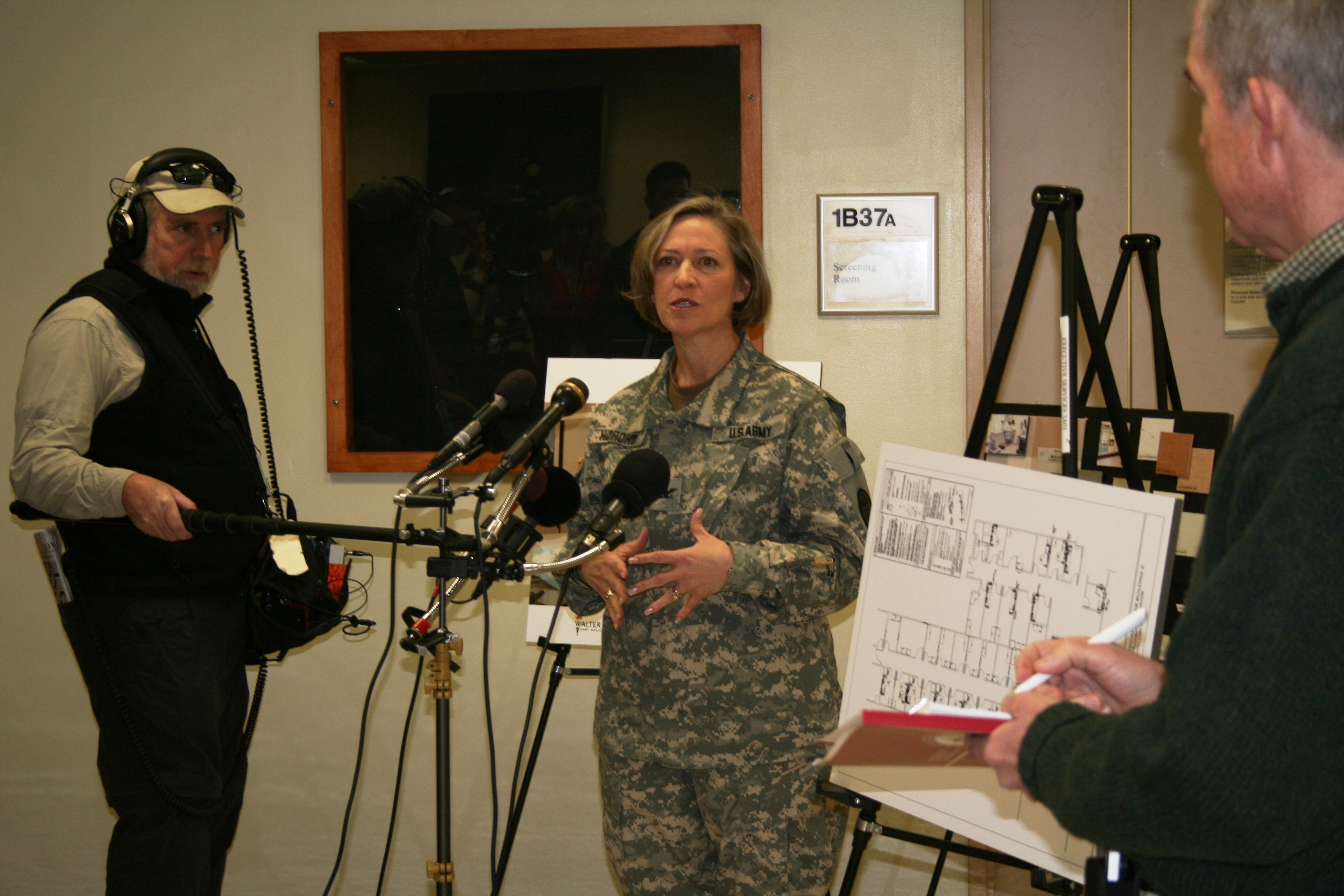WASHINGTON (Army News Service, Feb. 15, 2008) - Secretary of the Army Pete Geren and Vice Chief of Staff of the Army Gen. Richard Cody were at Walter Reed Army Medical Center today for the official opening and ribbon cutting of the hospital's Warrior Clinic.
"Today we celebrate one more building block of the construction of an organization that better meets the needs of our Soldiers. One more building block in the reconstruction of America's confidence that our Army was true to our values," said Secretary Geren.
The only clinic of its kind in the Army, it actually began treating patients in October, and administers to about 686 outpatient Soldiers assigned to the Warrior Transition Brigade at Walter Reed, said Col. Patricia D. Horoho, commander of the Walter Reed Health Care System. It represents a new focus on providing primary care at WRAMC, she added, and not just specialized tertiary care.
According to Head Nurse Maj. Greta Collier, the entire clinic was constructed in less than two months and was designed with handicapped Soldiers in mind. Clinic staff advised on everything from the type of exam tables to the location of supplies to the artwork on the walls, which represent Soldiers' hometowns from across the 50 states.
Even the clinic's location on the first floor, she said, was chosen for patients' convenience. Many were already familiar with it as the old internal-medicine clinic and it's near the emergency room, pharmacy, and radiology departments. It's also very close to Subway and Dunkin Donuts, which makes it easier to remember for patients with memory problems.
A larger example of the 35 Warrior Transition Units across the Army, the WTB consists of three companies. The centerpiece of the WTU or WTB is the triad: squad leader, nurse-case manager and primary-care manager. Each company has its own primary-care doctor (one for every 200 Soldiers) who can get to know the Soldiers, which officials said was critical for continuity of care.
"Continuity of care is paramount in providing primary care," said Dr. (Capt.) John Betteridge. "It's our goal. I think this clinic, we provide continuity of care between myself and the Soldiers, but then we also have this added layer of the triad, where everything is in continuity with the case manager and the squad leader. We speak weekly about every Soldier and we speak on a daily basis on Soldiers who are having issues."
To further ensure that Soldiers' needs are met, there is a squad leader for every 12 Soldiers. The squad leader handles logistics and finances. There is a nurse case manager for every 18 Soldiers. The case manager tracks appointments and medications.
That support has been crucial in helping keep track of six to seven personal appointments each week, said Sgt. Sgt. Michael Anthony Mynard, who lost both legs while serving in Iraq with the 2nd Stryker Brigade.
"If any appointments pop up that I don't know about, (my nurse-case manager) will give me a call so I don't miss them, and then if she feels I need an appointment, she'll make one. And if I need an appointment and I can't make it, she'll also make one for me. And then, Sgt. 1st Class Torres (my platoon leader) makes sure I get everything I need to get done in order to continue working. It's really good care. It's the best care. I was out of the hospital in under two months. I was out on my own, taking care of myself," he said.
"I'm his advocate," said Sgt. 1st Class Eliseo Torres. "I'm an extension to him. Whatever he can't do physically or mentally, that's my job. I have to put myself in his shoes every day to see what he goes through, and see what he needs to accomplish to make himself better and to be able to be successful later on once he leaves here. My job as a leader is to make sure I'm taking care of my troop, and he has someone he can count on. This has probably been one of my best assignments ever because I feel that I get to make a difference. Sgt. Mynard inspires me everyday to do what I do. Him and others like him. To have just gone through what he went through and to have a positive attitude and still trying to go on and live his life, I owe it to him."
Like many Soldiers, Mynard isn't sure what he'll do next. He joined the Army to be in the infantry, and thinks it will be too painful to do anything else now, but he said he wouldn't want to change a thing. He would like to go back to school to study auto engineering, a dream the Army and WRAMC may be able to help with.
Each room in the barracks has high-speed internet so Soldiers can attend classes online, and according to Torres, part of his job is making sure his Soldiers are aware of educational and career-building activities at WRAMC.
The Army's goal, explained WTB Commander Col. Terrence J. McKenrick, is to give warriors a better chance of getting back into the force -- WRAMC's return to duty rate is over 50 percent -- or a better transition to the Department of Veterans Affairs.
Co-located with the Warrior Clinic are offices for doctors conducting a pilot program between the Department of Defense and the VA to consolidate the medical evaluation board system. Previously, servicemembers had to undergo a military evaluation and then a separate VA evaluation to receive a disability rating and benefits.
Under the pilot program, according to its director, Col. Maria Mayorga, the military branch determines if a servicemember is fit for duty and the VA determines the disability rating. Instead of long delays complained of previously, VA benefits will now start the first day of the calendar month following separation.
Mayorga said that the 60 servicemembers currently in the pilot like how quick the process moves. Under the old system, she said, it took about 220 days to be evaluated at WRAMC, and then another 180 days at the VA. The new system takes 240 days total and accounts for the varying requirements of individual services.
"In concept, it is a 200-percent improvement over what existed and there is a tremendous commitment among Army, Defense, VA to make this pilot program work," Mayorga said.










Social Sharing